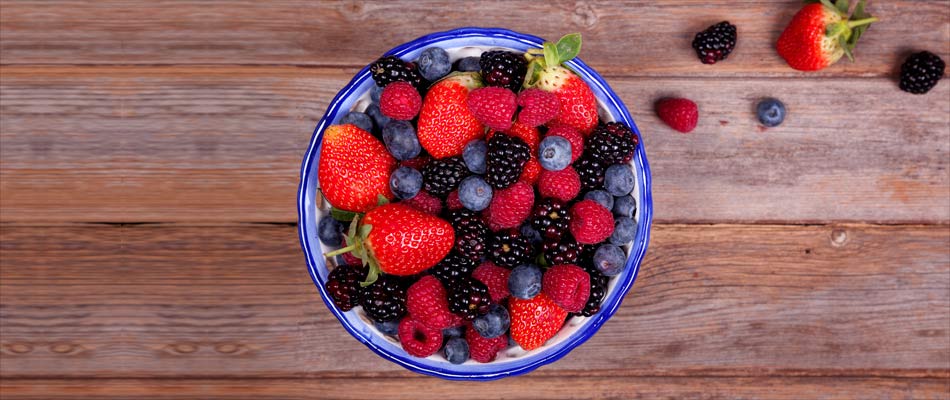Medindia » Multimedia » Slideshows » How to Stay Hydrated with Fruits and Vegetables All Day Long

Water is one of the most basic elements of life; however, understanding the water requirements of your body can be a challenging task. Most of us aim at drinking 1.6 to 2 liters of water per day (i.e., around 8 glasses). But the question is- does it always need to be water? Hydration can also be achieved by intake of various fruits, vegetables, juices, milk, tea, and coffee. Here is a list of top hydrating foods that are nutritious as well as highly moisturizing.

Cucumber contains around 96% water and has the highest water content as compared to any other food. It is rich in vitamin C, beta carotene, manganese, antioxidants, and caffeic acid (used by athletes as supplements to improve their performance). As it is high in water content and has a great balance of minerals, it is twice as effective in hydrating as plain water. It helps in staying hydrated as well as flushing out toxins from the body, in turn helping maintain a healthy complexion.

The scientific name of tomatoes is Solanum lycopersicum and tomatoes fall into the category of both, fruit and vegetable. They form an integral part of most cuisines across the globe. Tomatoes have a high water content (around 94%) and help in hydration when eaten either raw or cooked. Tomatoes also contain a large number of antioxidants and are a rich source of vitamins and minerals. They are a rich source of vitamin A, C, and K. They are also rich sources of manganese, potassium, magnesium, phosphorous, and have high dietary fiber and protein.

Watermelon contains around 92% of water. It is one of the most refreshing and delicious summer fruits. On a hot thirsty day, a watermelon wedge or juice will do all the refreshing magic our body requires. Watermelon contains an amazing balance of vitamins and minerals including vitamin C, magnesium, potassium, and lycopene (which is linked to reducing the risk of heart diseases and cancer).

Iceberg lettuce is used as a main constituent in salads because of its crunchy texture. It contains 96% water and is also a great source of dietary fiber. It has fewer nutrients as compared to other greens; however, it is very low in calories and helps to keep you full for long, thereby helping in weight loss.

Celery has a high water content of around 95% and is commonly used for garnishing. It is known to contain certain minerals such as calcium, sodium, copper, magnesium, and vitamins like vitamin A, C, E, and K. It has various health benefits, such as reducing blood pressure, weight loss, and detoxification.

This root vegetable has a water content of around 95% and is rich in antioxidants. It's no surprise that radish contains dietary fiber, which helps to keep our digestive system flushed and function well.

All bell peppers are rich in water content; however, green bell peppers top the list with 94.5% and others about 92%. Other than its water content, bell pepper also provides our body with certain alkaloids, vitamin C and A.

Spinach is another green leafy vegetable that is easily available throughout the year and has high water content (around 92%). Unlike iceberg lettuce, it has high nutritive value and is an amazing source of vitamin A, E, and iron.

Juicy berries are always refreshing and an all-time favorite with adults and kids alike. Strawberries contain around 92% and raspberries around 87% water. Cranberries are rich in vitamin C and fiber and contain around 87% water. Blackberries and blueberries are also good hydrating fruits during summer. Have them as a smoothie, juice, or even better as a munching snack, they will be nutritive as well as hydrating for our body.

Try eating an orange or a grape fruit and you will know how juicy it is! Grapefruit and orange contain 91% and 87% of water, respectively, and they are rich sources of vitamin C.

Cauliflower and broccoli are cruciferous vegetables and belong to the same family Brassica oleracea. Both the vegetables contain vitamins A, C, and K; however, the nutritional value of broccoli is more than cauliflower. Don't go by their pale and dry appearance, both these vegetables have numerous health benefits and have a lot of moisture in it. The water content of cauliflower and broccoli are around 92% and 90%, respectively.

Baby carrots have more water content (around 90%) as compared to regular carrots, additionally they are every bit as nutritious as large carrots. This root vegetable is known for its long list of vitamins and minerals and the health benefits i.e. vitamin A, C, and more.

Yogurt is a cultured dairy product that can be made from whole or low-fat milk. It is a good source of protein, excellent source of calcium, low in fat and high in minerals and essential vitamins, including vitamin B12, riboflavin B2, phosphorus, and potassium. It is also a probiotic, which balances gastrointestinal flora and regulates digestive system. Intake of a bowl of yogurt is a great way to keep yourself hydrated throughout the day, in addition to its other health benefits.

Cantaloupe i.e. musk melon contains around 90% water. Cantaloupes are surprisingly an excellent source of vitamin A. Sweet and delicious they are a great source of hydration especially in summers.
 MEDINDIA
MEDINDIA

